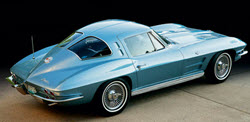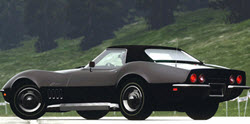The role of Zora Arkus-Duntov, the “Father of the Corvette.”
The Early Life of Zora Arkus-Duntov
Zora Arkus-Duntov, a pivotal figure in the automotive world, was born on December 25, 1909, in Belgium to Russian-Jewish parents. His early life was characterized by a multicultural upbringing that undoubtedly shaped his world view and approach to engineering and innovation. As the First World War unfolded, Zora and his family moved back to Russia for a brief period before eventually settling in Berlin, Germany. This diverse early exposure to various cultures and languages likely equipped him with a broad perspective, which would later be evident in his international career in automotive engineering.
Arkus-Duntov’s penchant for engineering manifested early in his life. His enthusiasm for learning and an inquisitive mind led him to pursue formal education in engineering—a decision that would prove pivotal in his long and successful career. He studied engineering in Berlin, where he first engaged deeply with automotive technology and cutting-edge developments in the industry. Later, he continued his studies at the Institute of Technology in Charlottenburg, where he refined his technical skills and began to carve out a clear path toward a future in automotive innovation.
His early career was marked by an intense passion for automobiles and motorsport. He didn’t just pursue this interest passively; instead, he actively engaged with some of the leading European racing teams of the time. This experience allowed him to apply theoretical knowledge in practical settings, gaining invaluable insights into the demands of high-performance vehicles. Before moving to the United States, Arkus-Duntov honed his skills by working with notable European racing teams, thereby laying the groundwork for his future achievements in automotive engineering.
Joining General Motors and the Birth of the Corvette
Zora Arkus-Duntov’s journey took a turning point in 1953 when he joined General Motors (GM). This move was the beginning of a significant chapter in his career, one that would immortalize his contributions to automotive history. Upon joining GM, Arkus-Duntov quickly set his sights on the Chevrolet Corvette, a car unveiled as a prototype at the GM Motorama in New York the same year.
At the time, the Corvette was more of a stylish roadster rather than the high-performance sports car it would become. Arkus-Duntov, with his keen eye and love for speed and performance, immediately recognized the car’s potential. However, he was acutely aware of its inadequate performance. Motivated by his passion for transforming this prototype into a legitimate sports car, he embarked on a mission to revamp the Corvette’s capabilities.
Contributions to Corvette’s Engineering
Arkus-Duntov’s contributions to the Corvette’s engineering were revolutionary. He spearheaded a series of innovations that played a critical role in enhancing the car’s performance, establishing it as a high-performance vehicle in the process. His engineering expertise went beyond mere performance tweaks, focusing instead on reimagining the Corvette’s core mechanical attributes.
To address the need for more power, Arkus-Duntov set out to improve the car’s engine strength. He was instrumental in equipping the Corvette with a small-block V8 engine, which marked a significant shift from the six-cylinder engines previously used. This upgrade not only increased the car’s horsepower but also its appeal to performance enthusiasts. Furthermore, he introduced a manual transmission to the Corvette lineup, which contributed to a more engaging driving experience.
The Development of High-Performance Features
Arkus-Duntov’s vision for the Corvette extended beyond engine performance to include a suite of high-performance features that would become integral to sports cars. He was a passionate advocate for the adoption of fuel injection systems in production vehicles—a technology that enhanced both performance and fuel efficiency. His efforts in promoting fuel injection paved the way for its widespread adoption in subsequent Corvette models and in the automotive industry at large.
One of his other significant contributions was introducing independent rear suspension, a feature that drastically improved the car’s handling and ride quality. This innovation showed Arkus-Duntov’s foresight in understanding the importance of handling in high-performance vehicles. He also took an active role in refining the Corvette’s aerodynamics, working to reduce drag and improve stability at high speeds. Additionally, he emphasized the importance of lightweight construction techniques, which further elevated the car’s performance metrics.
These engineering triumphs culminated in the creation of a sports car that was not only visually appealing but also technically advanced. With Arkus-Duntov’s influence, the Corvette evolved into a vehicle that could compete with European sports cars, establishing it as an icon in American automotive culture.
Zora Arkus-Duntov’s Lasting Legacy
Zora Arkus-Duntov’s impact on the Corvette—and, by extension, the automotive industry—is enduring. His innovative spirit and dedication to making the Corvette a genuine sports car have left an indelible mark on the model’s evolution and reputation. Dubbed the “Father of the Corvette,” his legacy is evident in every new model that bears the Corvette name.
The engineering principles and innovations he championed have transcended the Corvette, influencing broader automotive design and engineering practices. Today, the Corvette remains synonymous with American sports car performance, a testament to Arkus-Duntov’s pioneering contributions.
For those intrigued by Zora Arkus-Duntov’s life and accomplishments, numerous detailed resources are available that explore his work and its impact on the automotive sector. His story serves as an inspiration to engineers and automotive enthusiasts alike, highlighting the enduring value of innovation, dedication, and foresight in the pursuit of excellence.



